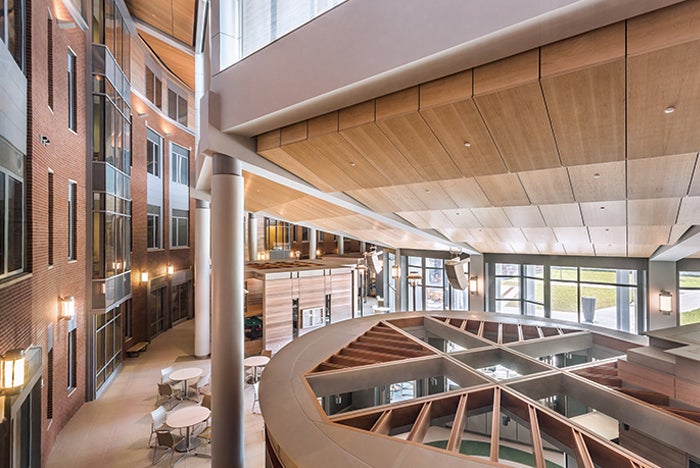Environmental upgrades contribute to staff efficiency and noise control

A nurses’ station at the Medical Center of the Rockies in Loveland, Colo.
Image courtesy of CBRE | Heery, photography by Main Street Studio
The health care design community has spent a great deal of time, energy and resources over the past several years identifying and documenting the influence the hospital built environment can have on clinical performance and patient satisfaction over a range of issues, including infection prevention, patient flow, medical errors and family engagement.
For this month’s Interiors supplement, we decided to take a closer look at how designers are handling two vexing challenges: staff efficiency and noise reduction.
In “Designing for staff efficiency” we talk to health care interior designers who have adopted a variety of strategies to help hospitals improve the efficiency of clinical staff. From adaptable rooms to nurse work stations to storage solutions and more, these experts are finding ways to reduce travel times for busy clinical professionals while still enabling them to manage their caseloads.
Drilling down into a challenging patient satisfaction area, our second article explores interior design strategies to help reduce hospital noise issues. In “Design strategies for noise reduction” leading interior designers discuss layouts, materials, casework and other elements that can help hospitals to reduce stressful and interruptive noise to benefit staff and patients alike.
Interestingly, designers who spoke with us for each of these articles were quick to point to solutions beyond their job descriptions, such as the important role that technology plays in improving staff efficiency and the need for maintenance professionals to have a hand in noise reduction. This provides the added lesson that, while interior designers bring a number of important and innovative solutions to the table, challenges like improving staff efficiency and reducing hospital noise can only truly be solved through team-based, hospitalwide efforts.


